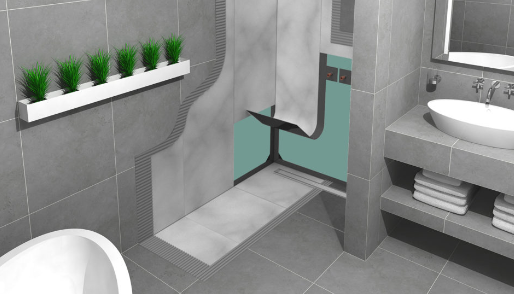Ways To Waterproof Concrete In Bathrooms In Bonita

- Use a sealer. A sealer is one of the most effective ways to waterproof concrete. It works by creating a barrier between the concrete and the water, which prevents moisture from seeping through. There are two main types of sealers: penetrating and surface. Penetrating sealers are designed to soak into the concrete, while surface sealers form a protective layer on top of the concrete.
- Apply a waterproofing membrane. Waterproofing membranes are thin layers of material that are applied over the concrete surface. They work by creating a barrier between the concrete and the water, which prevents moisture from seeping through. There are two main types of waterproofing membranes: self-adhesive and sheet. Self-adhesive membranes are easy to install and can be done by DIYers, while sheet membranes must be installed by a professional.
- Use a waterproofing paint. Waterproofing paint works by creating a barrier between the concrete and the water, which prevents moisture from seeping through. There are two main types of waterproofing paint: acrylic and latex. Acrylic waterproofing paint is more durable and longer lasting, but it is also more expensive. Latex waterproofing paint is less expensive, but it will need to be reapplied more often.
- Use a water repellent. Water repellents work by creating a barrier between the concrete and the water, which prevents moisture from seeping through. They are available in both clear and tinted formulas, and can be applied with a brush, roller, or sprayer. Water repellents should be reapplied every one to three years, depending on the manufacturer’s instructions.
- Install a French drain. A French drain is a type of drainage system that is installed around the perimeter of a room. It works by collecting water from the surrounding area and directing it away from the concrete, which prevents it from becoming saturated. French drains should be installed by a professional.
FAQ’s
What Do You Put On A Bathroom Concrete Floor?
The best way to waterproof concrete in a bathroom is to use a sealer. Sealers form a barrier between the concrete and the water, which prevents moisture from seeping through. There are two main types of sealers: penetrating and surface. Penetrating sealers are designed to soak into the concrete, while surface sealers form a protective layer on top of the concrete.
What Is The Best Waterproofing For Bathrooms?
There are a variety of waterproofing products that can be used in bathrooms. Some of the most popular options include sealers, waterproofing membranes, and waterproofing paints. Each option has its own advantages and disadvantages, so it is important to choose the best product for your needs.
How Do You Keep Concrete From Getting Wet?
The best way to keep concrete from getting wet is to use a waterproofing product. Waterproofing products form a barrier between the concrete and the water, which prevents moisture from seeping through. There are a variety of waterproofing products on the market, so it is important to choose the best one for your needs.
Conclusion
It is important to waterproof concrete in bathrooms because moisture can cause a variety of problems, such as mold and mildew growth, staining, and deterioration. There are a number of different ways to waterproof concrete, including sealers, waterproofing membranes, waterproofing paints, and water repellents. For more information, contact Concrete Contractor Bonita at (619) 494-1611.